
Timeline of Major Events
1775
Nano Nagle founds the Sisters of the Presentation of the Blessed Virgin Mary in Ireland.
Originally a religious community known as the Sisters of Charitable Instruction of the Sacred Heart of Jesus, the order of the Sisters of the Presentation of the Blessed Virgin Mary was established in Cork in 1775 by Irish Catholic woman Nano Nagle in reaction to the persecution of Irish Catholics under English penal law. The Sisters were dedicated to helping the poor, establishing schools and relieving suffering and injustice. Nano Nagle advocated education as a means of empowering the poor, enabling them to break the cycle of poverty and create a positive future.
1866
Establishment of the first Presentation school in Australia.
In 1866, the Presentation Convent in Cork sent several Sisters to Richmond, Tasmania, where they established the first Presentation school in Australia.
Construction of the first St Mary’s Church in Dandenong.
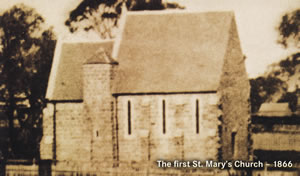
The same year, the first St Mary’s Church in Dandenong was built at a cost of £1159 and a Catholic school was started five kilometres away at Eumemmerring. St Mary’s Parish was established in 1883 by Archbishop James Alipius Goold.
1872
Passing of Victorian Education Act of 1872.
The Victorian Education Act of 1872 provided for free, secular and compulsory education for all Victorian children. Government funding of denominational schools was withdrawn, threatening the continuation of Catholic education. For Catholic schools to survive, they had to do so using only their own resources. On 28 January 1873, Father James Francis Corbett, parish priest of St Mary’s in St Kilda, wrote to the Reverend Mother of the Presentation Convent in Limerick, asking her to send a group of Presentation Sisters to Melbourne to provide Catholic education.
1873
Seven Presentation Sisters travel from Limerick to Melbourne.
In September 1873, Mother Mary Paul Mulquin and six Sisters boarded the Great Britain steamer at Liverpool, arriving in Port Melbourne three months later on 21 December 1873. They established a Presentation Convent and school at Windsor, before expanding their number and spreading throughout the state.
1910
Property purchased in Dandenong for erection of a school and convent.
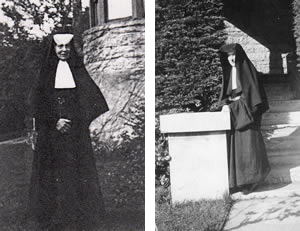
Parish priest Father John Gleeson wrote to Mother Ita Cagney of the Presentation Convent in Windsor, asking her to send some nuns to Dandenong to open a new convent and start a Catholic school. He purchased two adjoining properties on Langhorne and McCrae streets to erect the school and convent.
1912
Establishment of Presentation Convent and St Mary’s Catholic School, Dandenong.
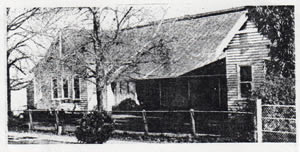
On 12 February 1912, Sisters Patrick Considine, Fidelis Burgess and Angela Bourke arrived in Dandenong from Windsor to establish a convent at 71 Langhorne Street. St Mary’s Catholic School was officially opened and blessed by Archbishop Thomas Carr of Melbourne on Sunday 3 March. The school opened with 75 students and the first school concert, attended by 250 people, was held in June 1912. By the end of the first year, 100 pupils, including both Catholics and non-Catholics, were enrolled.
1914
Beginning of World War I.
World War I had a significant impact on the St Mary’s community, which was overwhelmingly against conscription. A student at the time, Len Keating, later recalled ‘every member of each family proudly displayed his “No” badge’ and when one family at the school began to openly support conscription, ‘they were treated with a great deal of reserve for a long time afterwards’. As the war went on, more and more familiar names of young men from the Dandenong community – some the brothers of St Mary’s students – appeared on the casualty lists.
First school sports meeting.
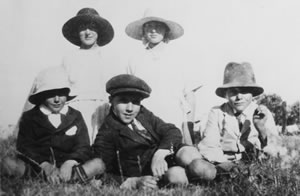
Early student Sarah Carroll recalled that the first school sports meeting was held in October 1914: ‘the track to be traversed was from the pine tree… to the fence down towards Power Street end of the grounds’. Sport and physical exercise were important aspects of the education provided by the Presentation Sisters from the very beginning. Len Keating remembered Sister Patrick following an instruction book on physical exercises published by the Defence Department and she ‘even gave demonstrations of knees bending with arms stretching.’
1918
Appointment of first lay teacher.
Miss McManus, the first lay teacher at St Mary’s, was appointed in 1918. Her niece, Mary, boarded at the convent soon after. She was the first and only boarder in the history of the school and her arrival was fortuitous for the Presentation Sisters…. Early student Len Keating recalled that Mary ‘usually starred as the leading lady in the concert cantatas’.
The following year, extensions were added to the school buildings. The Presentation community in Dandenong had been boosted by the arrival of Sister Philomena O’Gorman in 1914 and later by the arrival of Sisters Margaret Mary, Josepha, Aquinas and Cecilia. Sister Philomena joined the Sisters at St Mary’s School to teach years 7 and 8, known as the middle school, and later became principal in 1929.
1924
Building of new convent.

In 1924 a new convent was built next door to the original convent, at 69 Langhorne Street.
1936
1937
Silver jubilee of the Presentation Sisters in Dandenong.
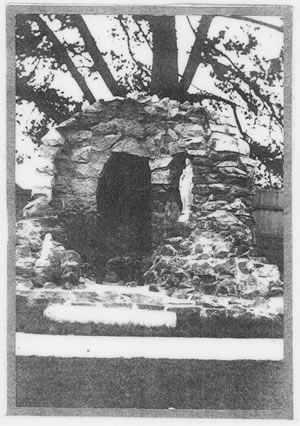
To commemorate the silver jubilee of the Presentation Sisters in Dandenong in 1937, a grotto was constructed at the convent.
1945
1950s
Enrolment numbers peak as a result of post-war migration.
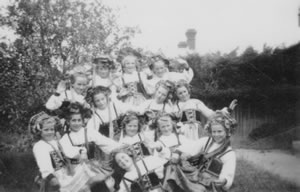
After the end of World War II, Dandenong underwent a period of major development. The rural character that had defined the area since the establishment of the first pastoral run in 1837 gave way to a new era, as the post-war industrial boom, coupled with migration from Europe, resulted in enormous growth in the region. Migrant children began attending the local schools, including St Mary’s. By 1955 attendance had risen to 484 and numbers peaked in 1957 at 738. More classrooms were added to accommodate the growing number of enrolments.
1953
Purchase of a new 4 ½ acre site opposite the original St Mary’s School.
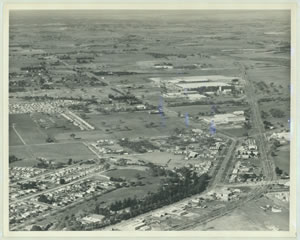
Airspy Collection, State Library of Victoria, H2008.41/43
Rapid industrial growth and accompanying rising population in Dandenong prompted parish priest Father Michael O’Sullivan to make provision for the expansion of Catholic education in the area. In 1953 he purchased a 4 ½ acre site in the heart of Dandenong for £11,000. Located opposite the original St Mary’s School, the site was bounded on three sides by McCrae, New and Power streets. The attractive property contained the burnt-out brick shell of ‘Roseneath’, Dr Francis Langley’s historic home, which had been built at the turn of the century but was unfortunately destroyed by fire.
1958
Expansion of the school to a new site and opening of St Mary’s Boys School.
In 1958 St Mary’s Boys School was established by the De La Salle Brothers to cater for the increasing numbers of students continuing their education after primary school and having to travel large distances to access secondary schools. The school opened on 4 February 1958 with a total of 52 boys from St Mary’s Primary School. The new school was initially located in a pre-fabricated building in McCrae Street, then in a large galvanised iron shed on the site, but later in the year three new classrooms were built at the school’s current location in New Street. This was the forerunner of the present two-story school building.
1959
Opening of third St Mary’s Church.
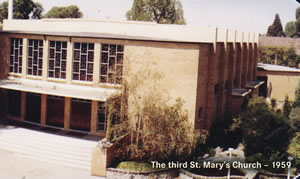
On 15 March 1959 the new St Mary’s Church was opened and blessed by Archbishop DJ Simonds in the presence of over 2000 people. Architect Robert O Ellis had been instructed to design a new church on contemporary lines to seat 900, complete with a choir balcony.
1960s
St Mary’s Girls Secondary School formed.
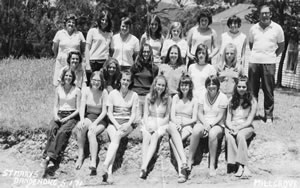
With increasing numbers of St Mary’s girls leaving to attend the newly established Killester College at Springvale to continue their secondary education, principal Sister Imelda Lynch was encouraged to conduct classes up to Grade 8. The secondary section of St Mary’s soon adopted the name of St Mary’s Girls Secondary School. The senior school curriculum gradually expanded and the first matriculation class graduated in 1968. In 1970, the secondary school was renamed St Angela’s in honour of Sister Angela Bourke, the last surviving member of the first Presentation Sisters in Dandenong.
1968
School moves to current location in New Street.
In 1968 St Mary’s Boys School, renamed St John’s Boys School, relocated to its own site in Caroline Street, Dandenong. St Mary’s Primary School then moved permanently from McCrae Street to its current location in New Street, occupying the two-storey brick building vacated by the secondary school.
1970s
Australian Government commences funding for Catholic education.
The election of the Whitlam Labor government in 1972 marked a significant turning point in the history of Catholic education in Australia. The Whitlam government set up the Australian Schools Commission, which published an influential report in 1973 that recommended block funding of Catholic education. Funding was provided to individual state governments with the proviso that it be allocated specifically to Catholic schools on the basis of need, as determined by state authorities.
School board formed.
In 1974, a school board was formed at St Mary’s Primary School to monitor school fees and provide support to the school administration. The board aimed to ensure that ‘no child will be deprived of Catholic Education because of money’.
1974
Buildings extensively refurbished.
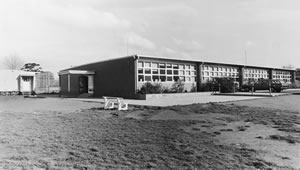
The school buildings underwent extensive refurbishment in 1974 after teacher Faye Chandley fell through the floorboards of an upstairs classroom and broke her ankle. The principal at the time, Sister Ann Halpin, recalled that the building still contained reminders of its previous inhabitants – the students of St John’s College – with relics including ‘old pen nibs dangling from the ceiling’.
1979
Appointment of first lay principal.
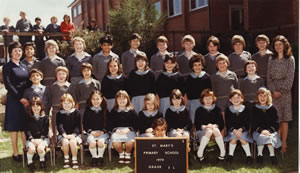
Peter Slate, the first lay principal of St Mary’s Primary School, was appointed in 1979. However, this did not mean that the Presentation Sisters’ involvement with the school was at an end. Sister Helen Carboon also started at St Mary’s in 1979 as a Grade 3 teacher and Religious Education Co-ordinator. She was the only Presentation Sister on the staff, although Sister Macnise Dowling, who had taught at the school for many years, still maintained a presence at the school and helped with remedial classes.
1980s
1983
Faye Chandley replaces Peter Slate as principal.
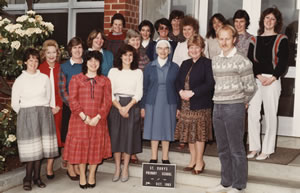
Presentation Sisters of Victoria Archives
Faye Chandley joined St Mary’s Primary School as a teacher in 1972. After taking up opportunities elsewhere in 1977, she returned to take on the role of principal at St Mary’s in 1983. Having grown up in Dandenong herself, Faye brought to the position a wealth of varied experience and a deep understanding of the needs of the children of Dandenong. Over the next ten years Faye Chandley led the school through years of great change – both in the increasingly multicultural nature of the students and in modern, innovative curriculum.
Centenary of the Parish of Dandenong.
In 1983 St Mary’s Parish celebrated the centenary of the formation of the Dandenong Parish, established by Archbishop Goold in April 1883.
1985
1986
Appointment of Father Anthony Guelen as parish priest.
Father Guelen was appointed assistant to the parish priest at St Mary’s parish shortly after he was ordained in 1958, where he remained until 1965. He returned to St Mary’s parish to take on the role of parish priest in 1986. A particularly significant change in the school that Father Guelen noticed on his return was that the teaching staff consisted almost entirely of lay teachers, as compared to the 1950s and 1960s when the majority of the teachers were Presentation Sisters.
Retirement of last full-time teaching Presentation Sister.
Father Guelen’s arrival coincided with the retirement of Sister Helen Carboon as the last full-time teaching Presentation Sister at St Mary’s Primary School. The remaining link with the Presentation Sisters ceased the following year when Sister Macnise Dowling retired from active service at the school, ending the Presentation Sisters’ 75-year association.
1987
Celebration of 75 years of Presentation Sisters in St Mary’s Parish and of St Mary’s Parish School.
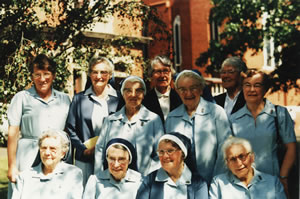
Presentation Sisters of Victoria Archives.
To commemorate the 75th anniversary of the Presentation Sisters in Dandenong and of St Mary’s School, a Mass of Thanksgiving was held at St Mary’s Church on 29 November 1987, attended by local parishioners and members of the Presentation Sisters community. Prayer services and celebrations within the classrooms were also held as the school and parish community joined together to acknowledge the enduring philosophy of the Sisters to nurture and support the children and families of the school.
First writer’s workshop held.
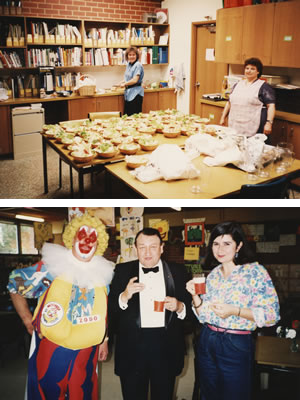
The writer’s workshop held in 1987 was the beginning of an annual program that involved themed activities for the whole school and encouraged participation from parents and the wider community. The event was sponsored by local businesses and Koala Bill from the Community Credit Union made a guest appearance in the afternoon for a giant balloon lift-off. The program was a huge success, with one visitor commenting ‘Congratulations on creating such a wonderful learning experience for all’.
1988
1992
Pilot program for primary schools on death and grieving.
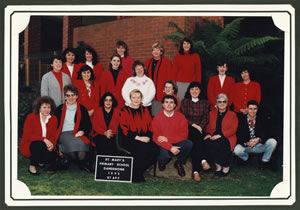
Courtesy Faye Chandley
For Australia’s first national Hospice and Palliative Care Week in April 1992, a primary schools pilot program was organised by a committee made up of teachers from local schools and staff from Dandenong Palliative Care Service. Teachers from 41 schools in Dandenong, Springvale and Berwick attended an in-service event focused on assisting teachers to better understand and feel comfortable with concepts of death, dying and grieving, and schools were encouraged to develop programs for children which encompass these important life issues. Several recent deaths in the local community at the time spurred on this pioneering program.
1993
St Mary’s receives a Proud School award in the City Pride Program.
The City Pride Program was an environmental program for metropolitan areas conducted by Keep Australia Beautiful Victoria. St Mary’s Primary School received an award in 1993 for outstanding community concern and action towards preserving the environment. The school introduced several environmental initiatives, including implementing strategies to involve children in recycling and litter control and introducing environmental and sustainability issues into the curriculum.
1994
Tom Lindeman replaces Faye Chandley as principal.
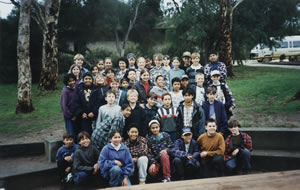
Courtesy Faye Chandley
Tom Lindeman recalls that one of his first impressions of St Mary’s when he arrived to take on the role of principal was the strong links that the school had with the local community. In St Mary’s parish, Tom discovered a core group of people who had been ‘born and bred’ in Dandenong and could be relied upon to provide support to the school when needed, from volunteering on a committee to helping at working bees and school events.
Modernisation of the school’s computer systems and IT education program.
Tom Lindeman had a focus on modernising the school, building on the computer program begun by Peter Slate a decade earlier and developing computer systems and the IT education program significantly during his time as principal. By the time he left the school in 2000, the library was completely automated and St Mary’s boasted a computer lab and at least four computers in each classroom, as well as a consultant who regularly worked with staff on improving the IT curriculum.
2000
Rosemary Tesoriero replaces Tom Lindeman as principal.
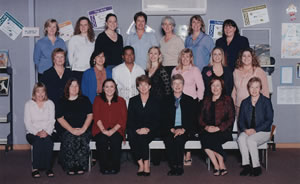
Courtesy Rosemary Tesoriero.
Rosemary Tesoriero joined the St Mary’s staff in 1989 and worked as a classroom teacher for several years, later taking on the deputy principal role. Father Guelen invited her to return as principal in 2000. Rosemary recalls that her vision for the school was to truly make a difference and ‘really try and provide the very best for the children so that they had the best chance possible later on in life’.
2000s
School building refurbishment.
Under the leadership of Tom Lindeman, the school’s resources grew and stabilised, supporting significant refurbishments to the school buildings in 2003 and 2005. Classrooms were updated to include doors between them, so that larger collaborative learning spaces could be created.
Sudanese families start arriving in Dandenong.
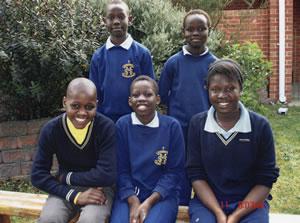
Courtesy Rosemary Tesoriero
One of the most significant changes at St Mary’s during the past decade has been the influx of Sudanese refugee families into the Dandenong area. This had a huge impact on the school, with one in six students by 2006 coming from a Sudanese background. During this busy and challenging time, the St Mary’s parish community pulled together to provide support to the newly arrived families. At Christmas time, teachers put together gift packages that were delivered to families to make them feel welcome and an important part of the community.
2007
Greg White replaces Rosemary Tesoriero as principal.
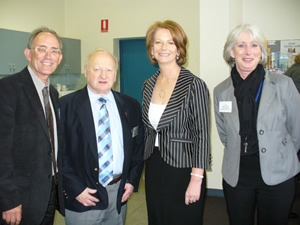
Current principal Greg White started at St Mary’s Primary School in 2007. He has made literacy a focus of the school curriculum and has also developed the sports program, enhancing students’ physical well-being through participation in inter-school sports. Through such initiatives, St Mary’s staff continue to focus on the broader development of students, enhancing learning through art, music and sports programs that enrich students’ general well-being and encourage them to develop a broad range of skills.
2008
Celebration of 125 years of St Mary’s Parish, Dandenong.
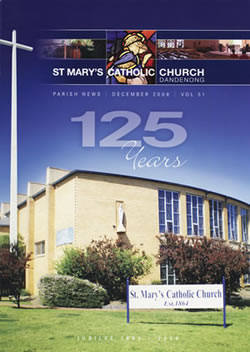
2008 was a significant year in the history of St Mary’s school and parish for several reasons. A booklet was published to celebrate the 125 years since the creation of St Mary’s parish in Dandenong, and Archbishop Denis Hart attended a special mass at the church. It was also the year that Pope Benedict XVI visited Sydney for World Youth Day. Dandenong was chosen as a central point for celebrations of World Youth Day, with the Cross and Icon coming to the district for a day, as part of its twelve month journey around the country.
Father Anthony Guelen celebrates the 50th anniversary of his ordination to the priesthood.
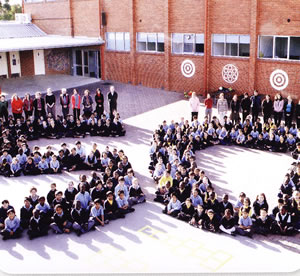
Also in 2008, Father Anthony Guelen celebrated his 80th birthday together with the 50th anniversary of his ordination to the priesthood. A celebration was held at St Mary’s Church in July, with parish choirs and Samoan and Sudanese song and dance performances bringing ‘real life and joy to the Mass’. St Mary’s school children held a special concert for Father Guelen and presented him with a school photo of the students and staff standing in the school yard in the shape of the number 50. Father Guelen retired the following year as the longest serving priest in the 125 year history of the parish. He was replaced by Father Declan O’Brien.
2012
The centenary year of St Mary’s Primary School is launched.

In 2012 St Mary’s Primary School proudly commemorates its 100th anniversary. The year-long celebrations commenced on Sunday 12 February with a Mass, followed by cutting of the celebration cake in the school auditorium. Current and past staff, pupils and parents joined with Presentation Sisters and parish priests to launch the centenary year, 100 years to the day since the school opened its doors.